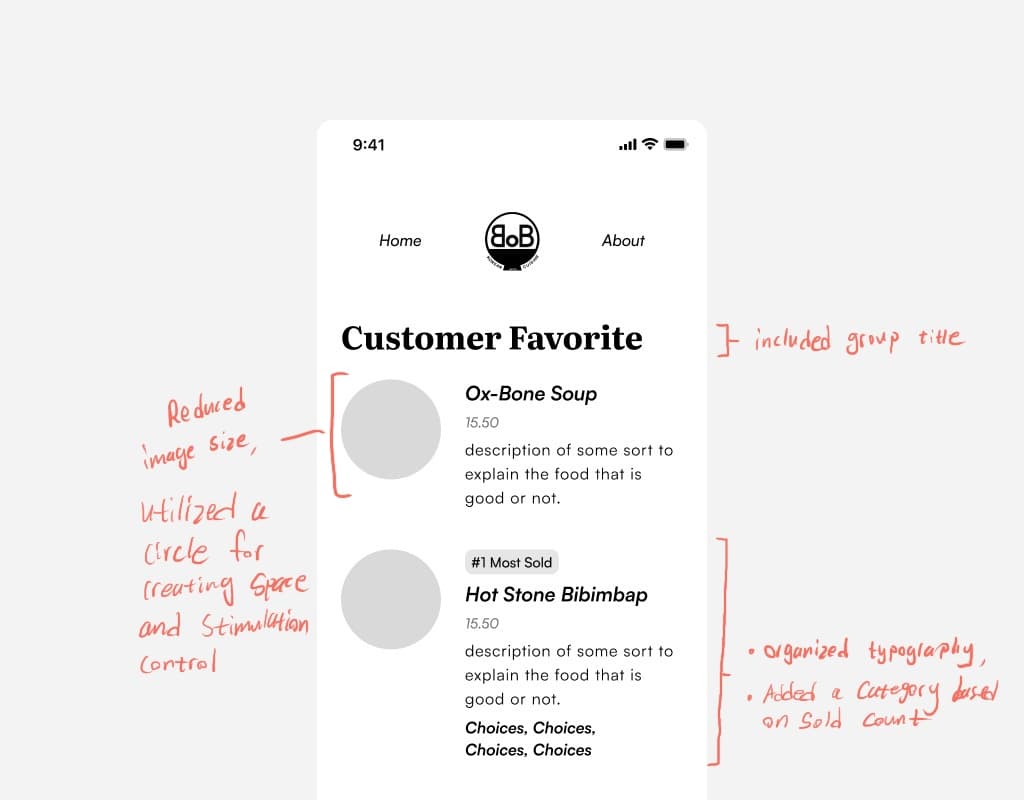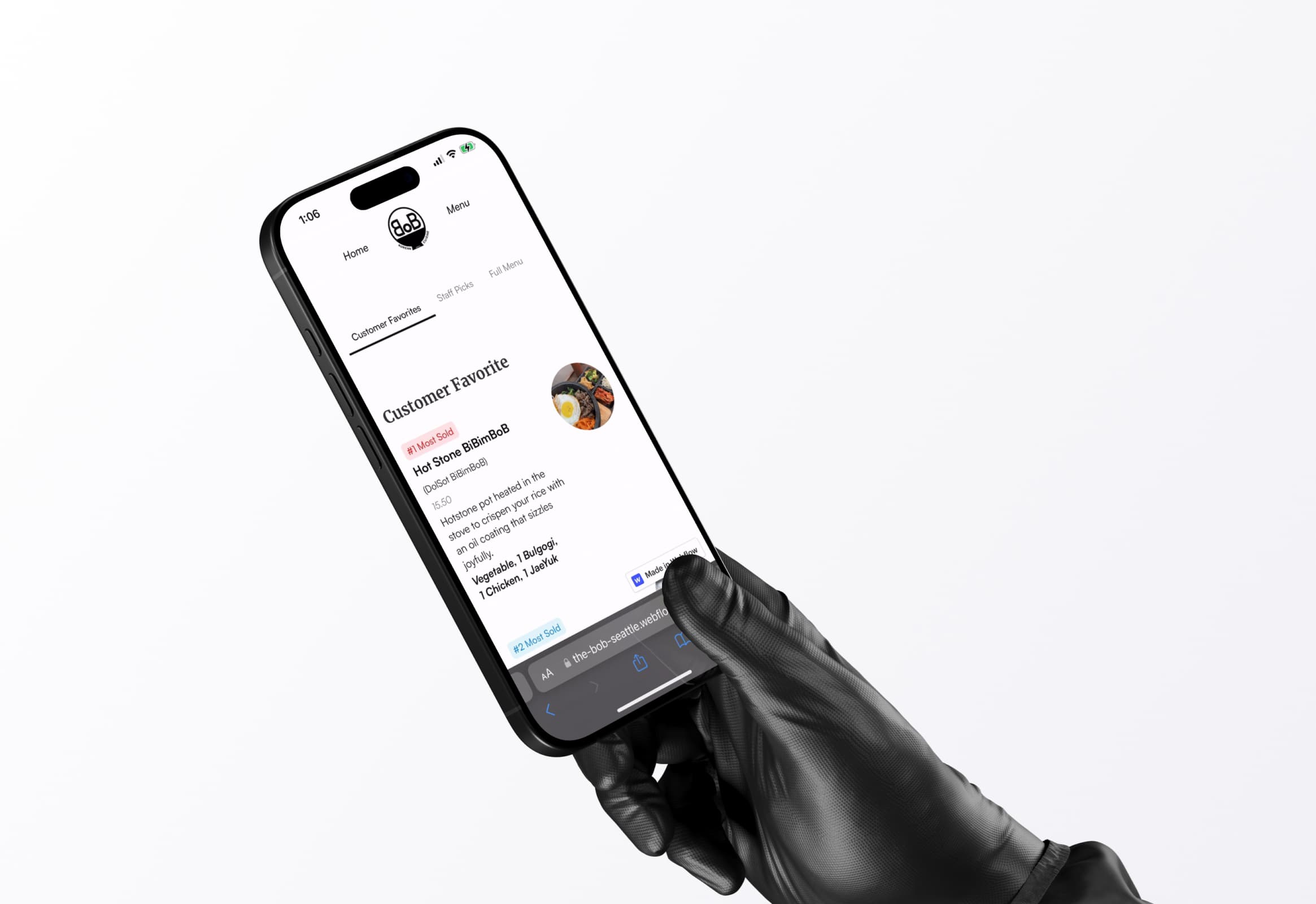
Increased The BoB's profit by 30% by collecting data to understand customer order patterns.
About
The BoB was a fast-casual Korean restaurant located in the U-district. As they served busy students and faculty members, the long decision-time to make orders were negatively impacting the overall business. To improve the customer experience and compete with 4 other competitors, we conducted research and developed a digital menu solution to combat decision-making.
key responsibilities & impact
+30%
in profit
+60%
in kitchen efficiency
-80%
in decision time
Problem
High abandonment rate caused by indecisiveness
Students and faculty members with 45-minute meal breaks need a way to quickly order and receive meals between schedules. Currently, they spend 20 minutes just placing orders due to overwhelming menu choices, resulting in 30% of potential customers leaving without ordering – making it impossible to eat within their break time.
Solution
QR scan menu optimized for decision-making
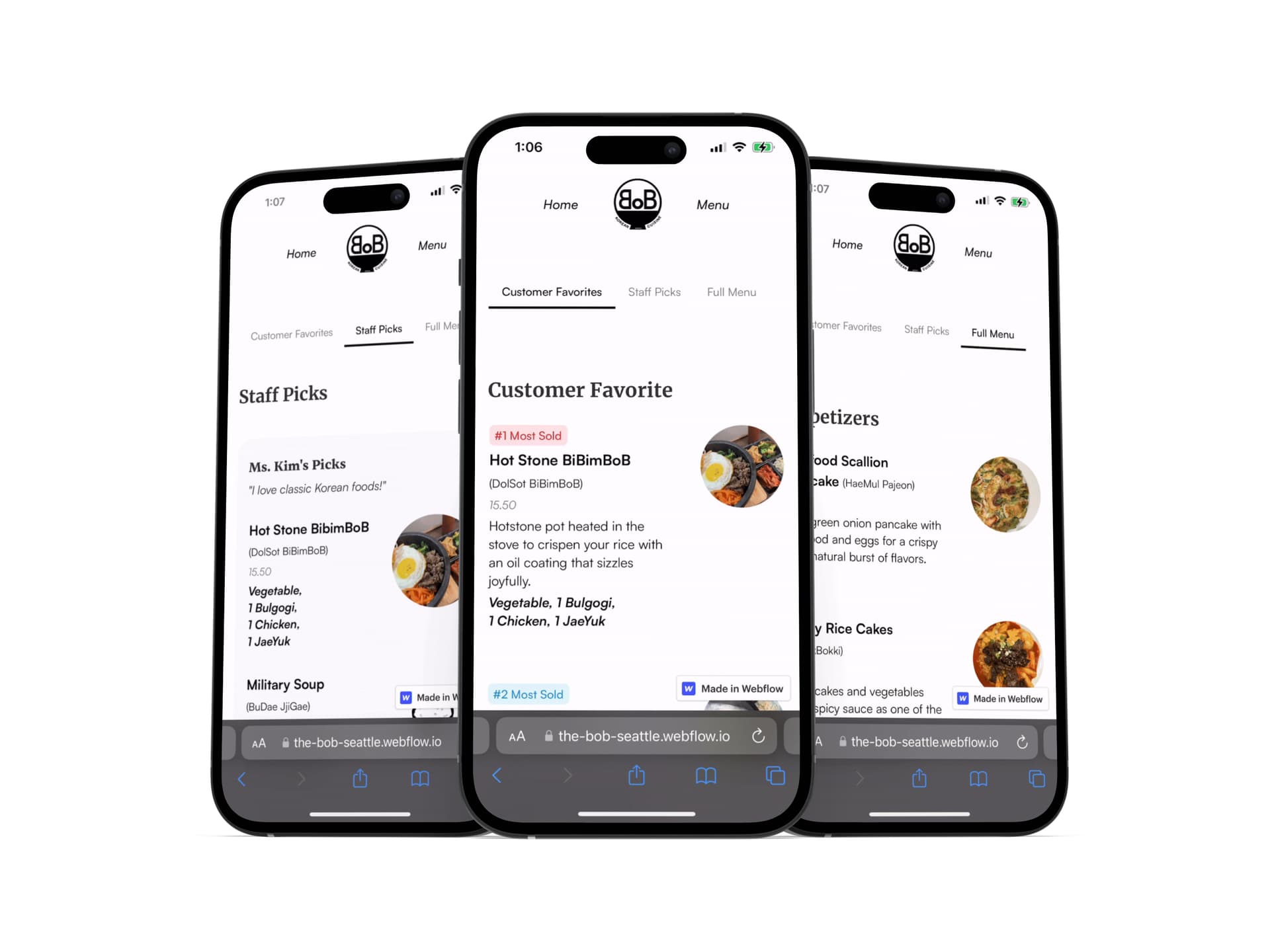
Research
Overwhelming choices, tech-savvy customers, and high foot-traffic area
We analyzed the correlation between ordering time and customer satisfaction, focusing on its impact on future retention opportunities.
This analysis highlighted the current overall satisfaction level and uncovered a core issue: an identity crisis. Indecisiveness in defining our brand has hindered our ability to project a clear image as a restaurant. While competitors consistently present a specific identity, our ambiguity has left our main customers confused.
This insight now positions familiarity as a key opportunity to assist customers in making confident decisions.
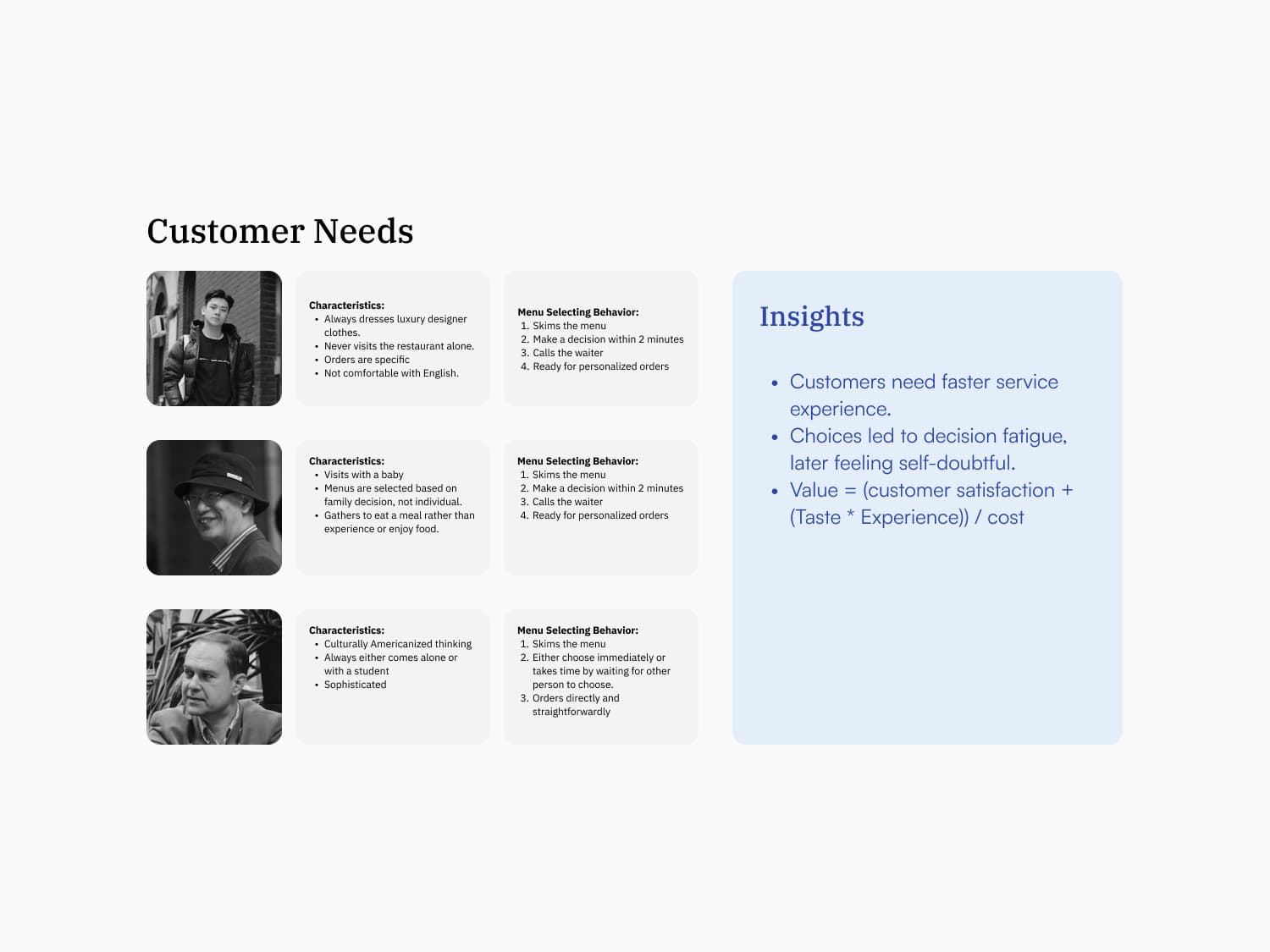
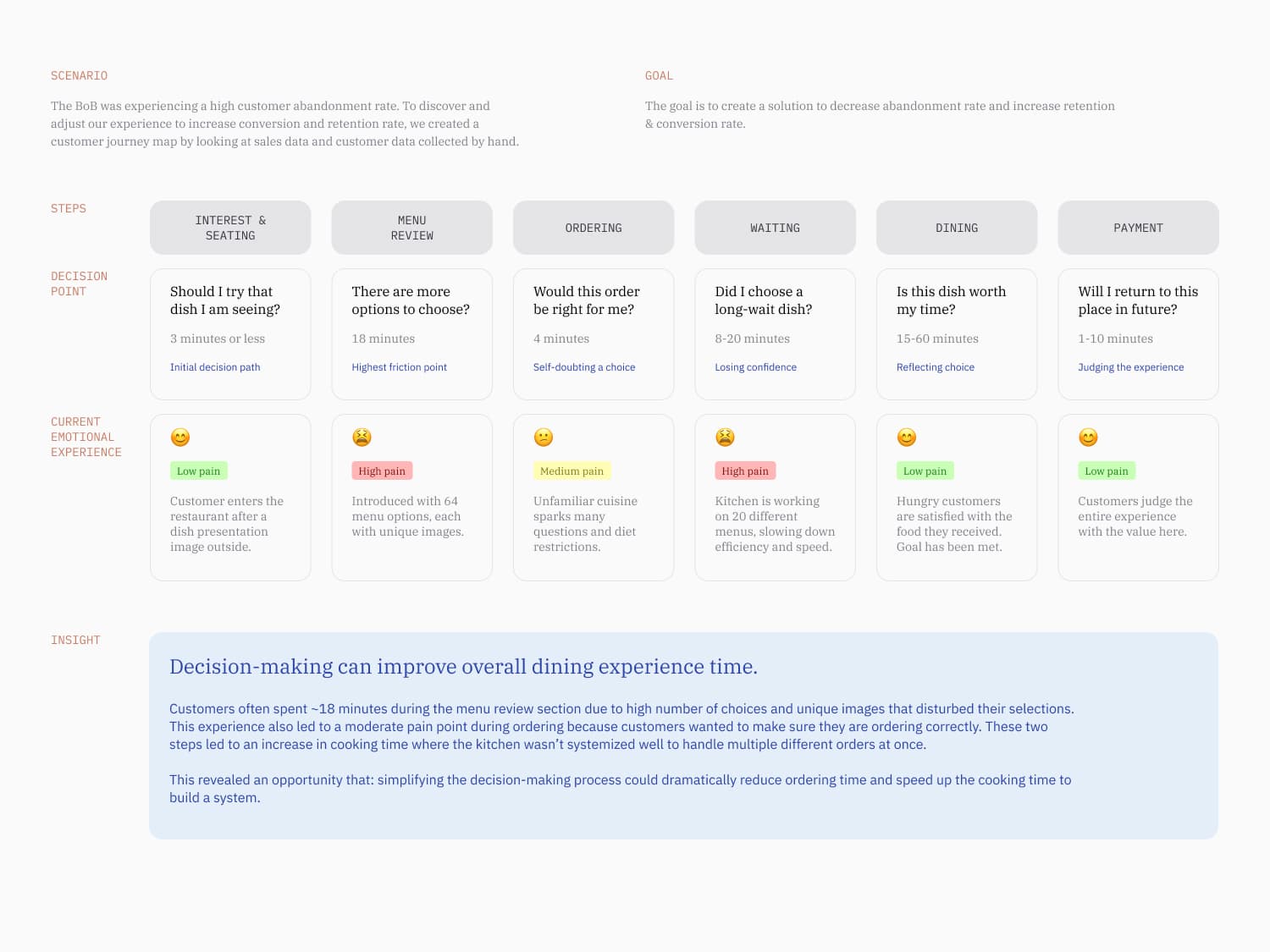
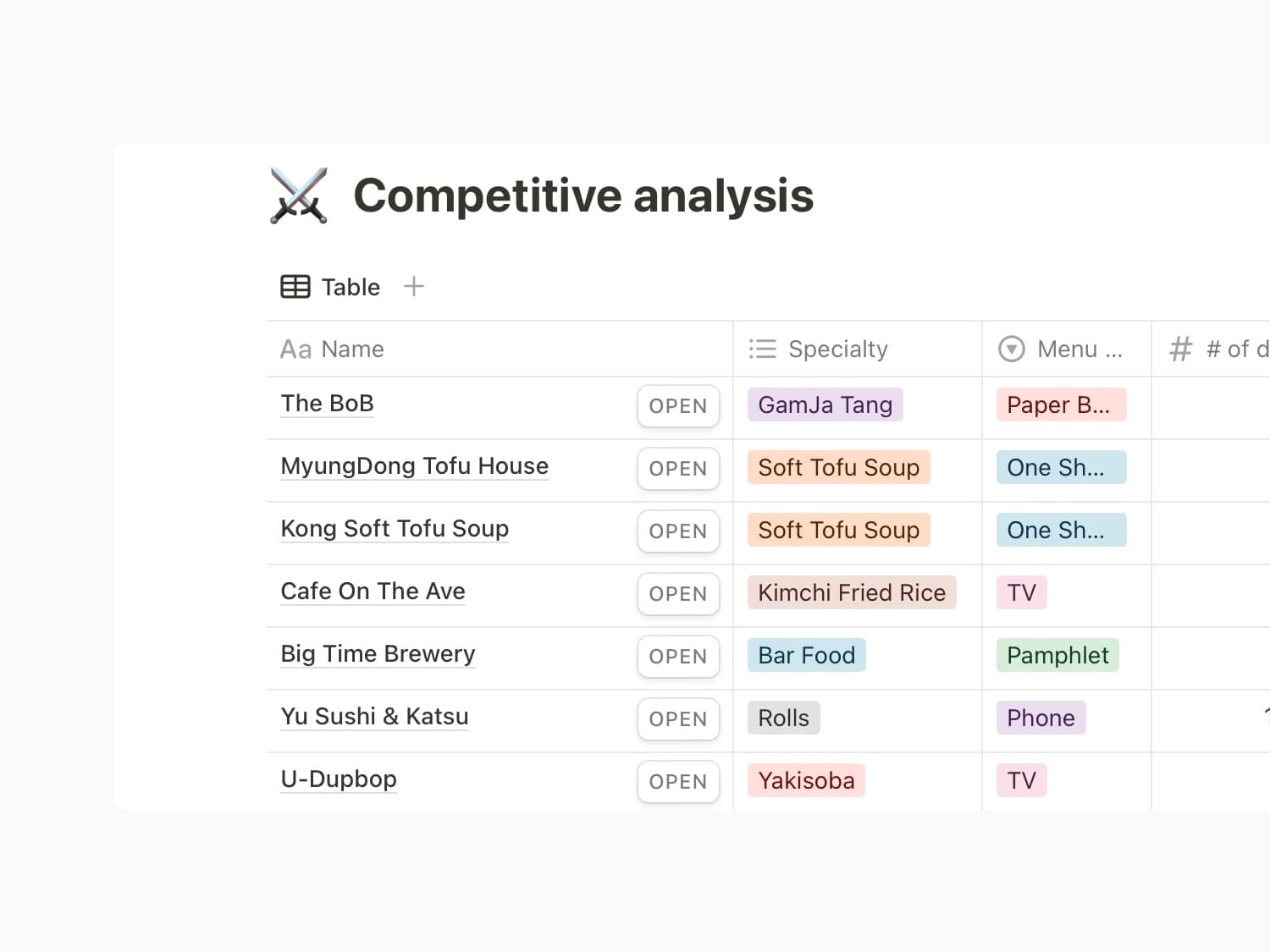
Ideate
Expecting a specific outcome with design
We determined every aspect of our business strategy to increase our brand exposure. We held meetings to discuss our key dish and optimal rentention points by guiding customers with a specific decisions. In simple term, we guided our customers to reach a certain decision to make our restaurant stand out.
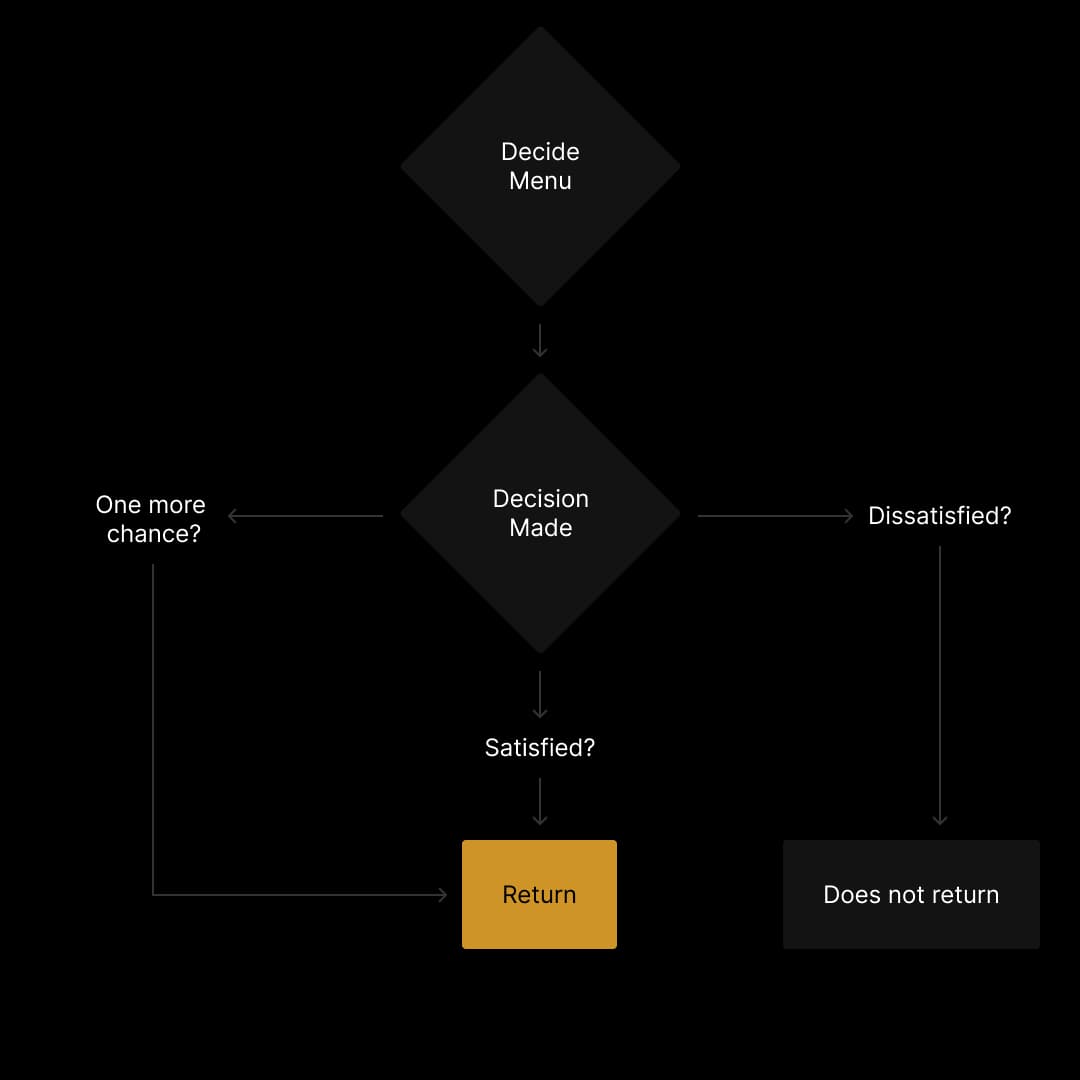
It's easier to make one good choice than many good choices
How can we make customers return to us from one experience? Customers are not charity. We only have one chance to provide our best service, food, and experience.
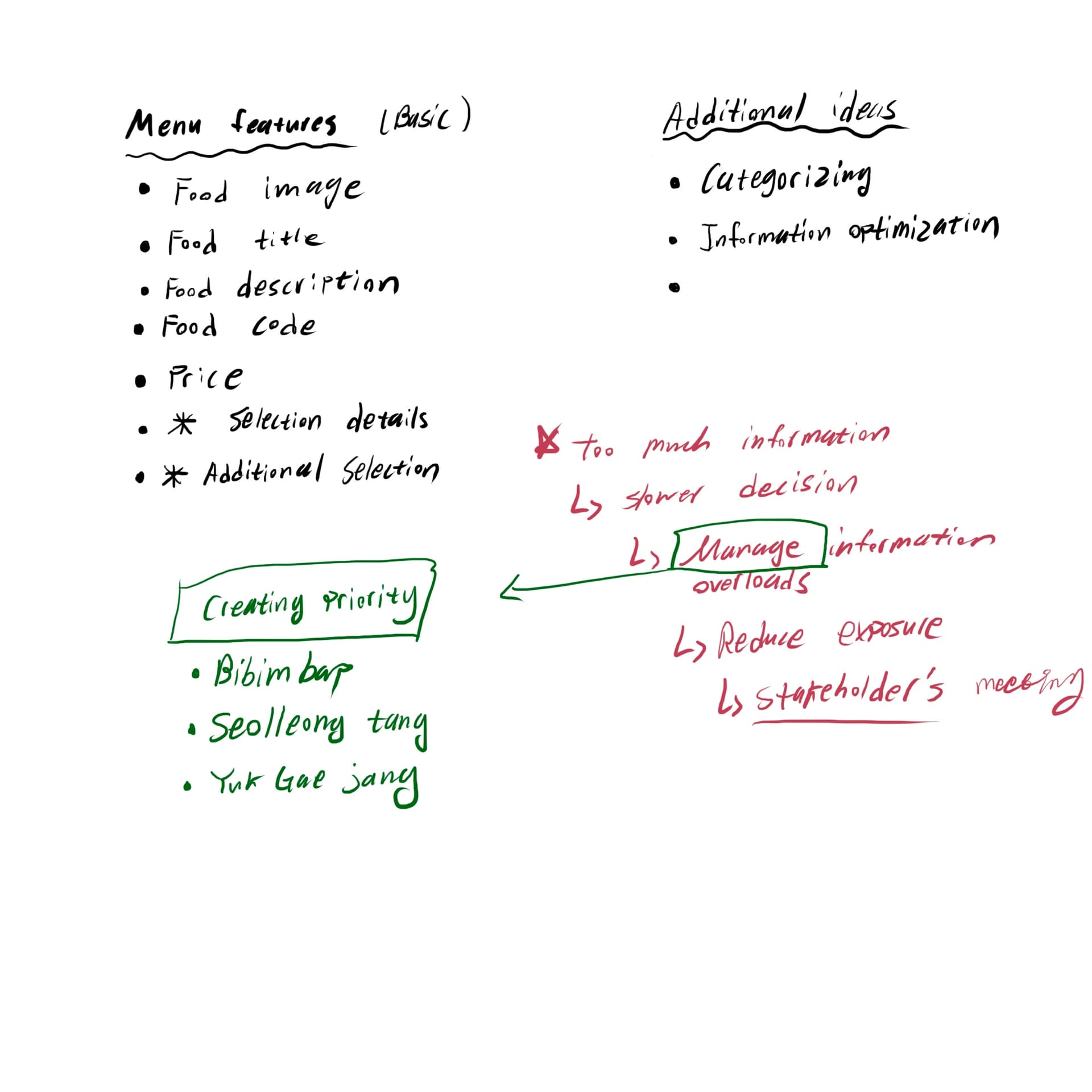
Define
More decisive, familiar, and accessible
From the research, I identified three core values for the design. First, people are naturally drawn to information that is easy to understand. Second, digital transformation has enabled us to access information from anywhere. Finally, many people experience frustration when presented with an overwhelming number of choices.
Study 1
Repetitive exposure makes information memorable
Study 2
Categorizing information makes them unique
Study 3
Partial information can increase decision-making
Design
Constantly validating progress with real customers
We determined every aspect of our business strategy to increase our brand exposure. We held meetings to discuss our key dish and optimal rentention points by guiding customers with a specific decisions. In simple term, we guided our customers to reach a certain decision to make our restaurant stand out.
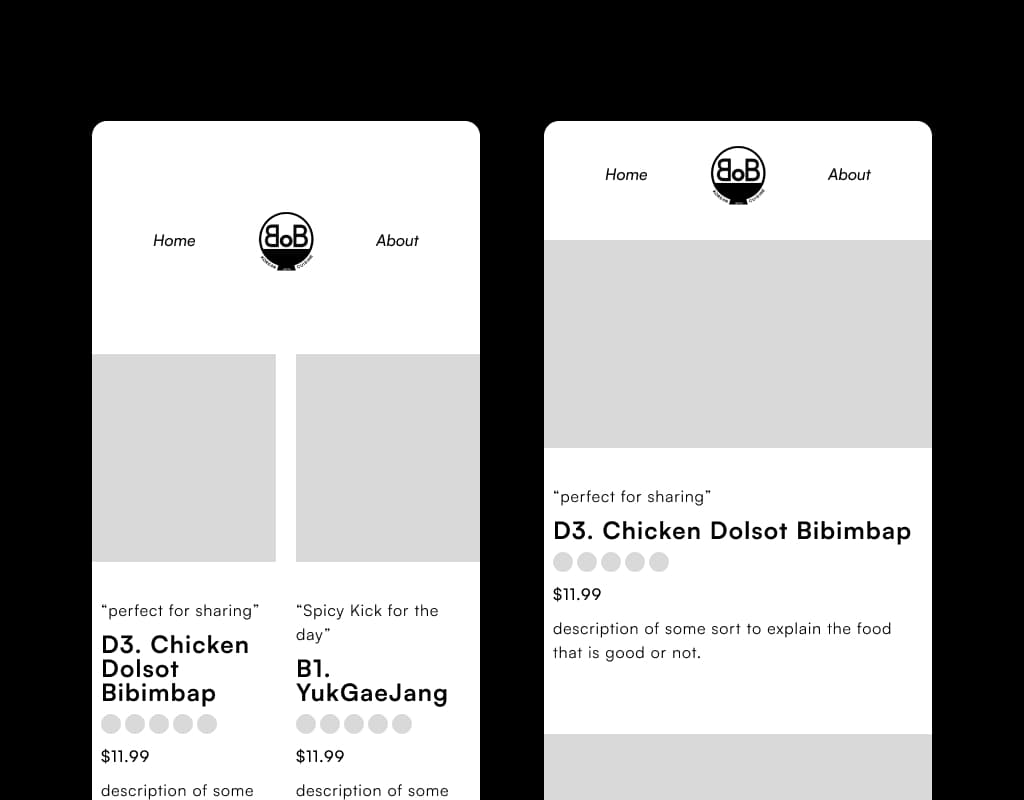
#1 Learnings
#1 Redesign goals
